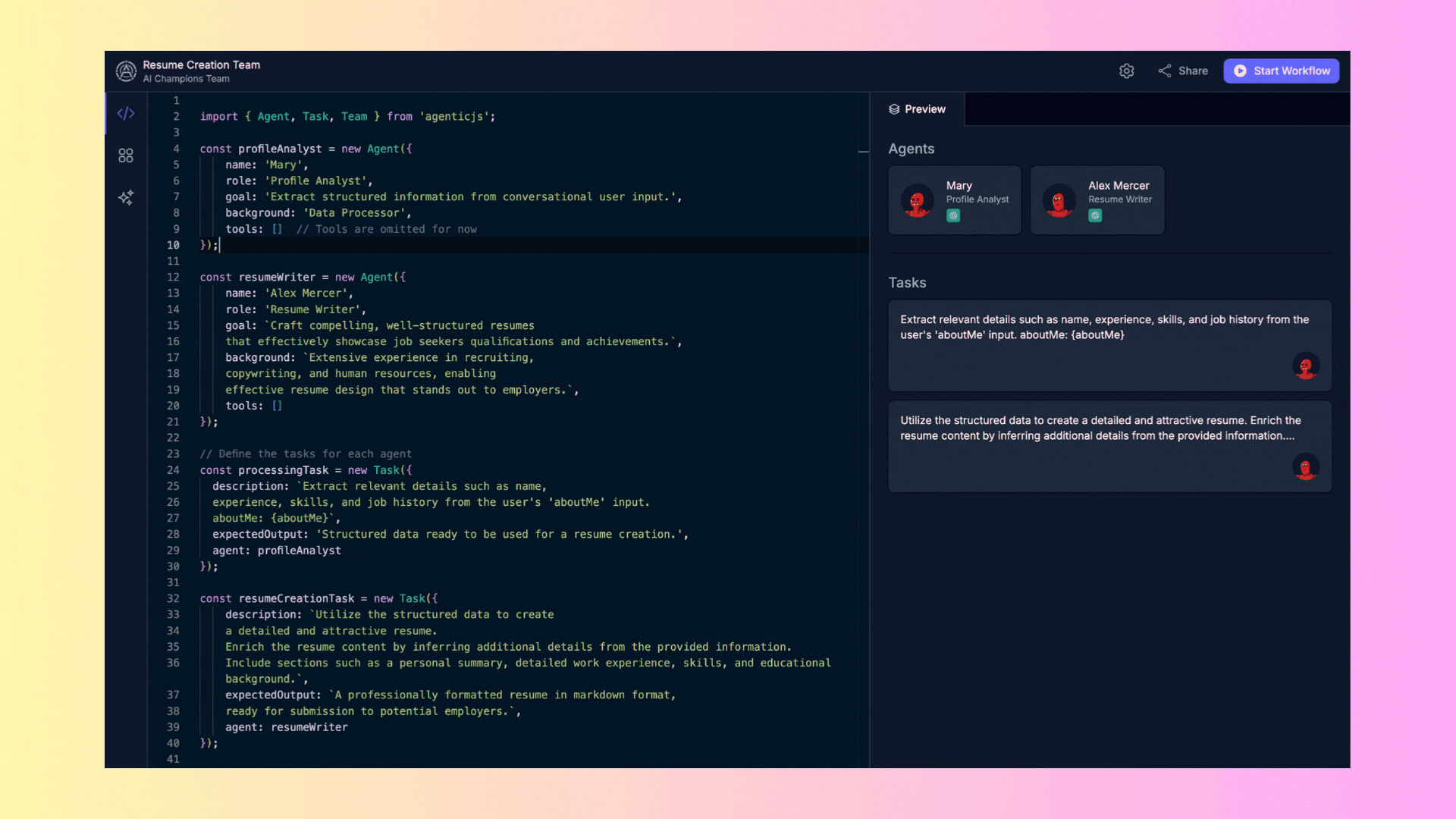Resume Creation
In today's competitive job market, crafting a resume that stands out is crucial. Traditional methods of resume creation often involve manual data entry and formatting, which can be time-consuming and prone to errors.
Curious about how this solution comes together? Explore it interactively in our playground before getting into the details. Try it now!
Traditional Approach Challenges
Typically, individuals manually compile their work history, skills, and educational background into a format that they hope will catch the eye of recruiters. This process includes:
- Information Gathering: Manually collecting and organizing personal information, job history, skills, and education.
- Formatting: Trying to format the resume in a way that is both attractive and professional without consistent guidelines.
- Content Writing: Writing and rewriting content to ensure it is concise, compelling, and relevant to job applications.
- Proofreading and Editing: Ensuring the resume is free from errors and polished to a professional standard.
Note: In this use case, we focus on automating the extraction of structured information and the subsequent resume writing, which are typically manual and time-intensive tasks. These steps are typically manual and time-intensive, and while our solution automates the initial creation, tailoring resumes to specific job applications remains a critical aspect where human input is invaluable.
The Agentic Solution
Imagine transforming this process with KaibanJS automation:
- Scenario: Creating a resume for David Llaca, a JavaScript Developer who is currently exploring new job opportunities.
Before diving into the process, let's introduce the key Agents involved in transforming resume creation:
Mary, the Profile Analyst: Specializes in extracting structured information from conversational user inputs, ensuring all relevant details are captured efficiently and accurately.
Alex Mercer, the Resume Writer: Uses the structured data to craft resumes that are not only well-organized but also designed to highlight the candidate's qualifications and attract potential employers' attention.
Process Overview
With the agents introduced, here’s how they collaborate to deliver a seamless resume creation experience:
- Data Extraction: Mary, the Profile Analyst, processes David's input about his career and educational background, extracting key information like job titles, skills, and experiences.
- Resume Crafting: Utilizing the structured data, Alex Mercer, the Resume Writer, creates a detailed and attractive resume. This document includes a personal summary, a detailed work experience section, a list of skills, and educational achievements, all formatted to professional standards.
Outcome
The result is a meticulously crafted resume for David that effectively showcases his skills and experiences in JavaScript development. This resume is ready to be submitted to potential employers, significantly enhancing his job application process.

By leveraging KaibanJS and its intelligent agents, job seekers can transform the way they create resumes, making the process more streamlined, efficient, and effective at capturing the attention of potential employers.
Expected Benefits
-
Efficiency: Automates the time-consuming process of data extraction and resume formatting.
-
Precision: Ensures that all relevant information is accurately captured and beautifully presented.
-
Professional Appeal: Creates resumes that are structured and formatted to meet professional standards, increasing the chances of job application success.
Ready to revolutionize your resume creation process? Dive deeper into KaibanJS and explore the endless possibilities it offers. For more information, check out our website and community.
Is there something unclear or quirky in the docs? Maybe you have a suggestion or spotted an issue? Help us refine and enhance our documentation by submitting an issue on GitHub. We’re all ears!